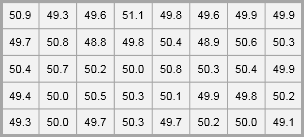

However, the A-D test gives a much higher p-value, indicating normality of the data:Ĭoming from a Six Sigma Green Belt background, where normality is king & molesting the data is strictly verboten, this feels like a conundrum. The p-value in our product weight example is 0.819 which suggests that the data follow the normal distribution. I ran an Anderson darling Normality Test in Minitab and following were the results P-Value 0.927 Mean 31.406 Std.Dev 8.067 Skewness -0.099222 Kurtosis -0.568918 I also Calculated the Values in an Excel sheet and following were the results skewness -0.09922 kurtosis -0.56892 median 32.000 std. The relevant population parameters and/or visually). To conduct an Anderson-Darling normality test in Minitab, select Stat > Basic Statistics > Normality Test, specify the column of data to analyze, then specify the test method to be Anderson-Darling, and then click OK. If I dither the data using "small-compared-to-process-variation" normally distributed noise ( $\mu$ = 0, $\sigma$ = 0.005) the distribution does not change in any meaningful way. Looking at the data it indeed appears to be normal, however the Anderson-Darling test gives a p-value of <0.05, indicating non-normal data: However, due to the resolution of the measuring instrument (reads out to 0.01) and relatively narrow range of values (min: 3.34, max: 3.74), there is a limited number of discrete values the measurement can take.
#MINITAB NORMALITY TEST FREE#
On a physical basis, pH is a continuous scale (being the negative logarithm of the concentration of free hydrogen ions in solution). This dataset will be used to infer process capability using Minitab. I have a dataset with several hundred pH measurements from a factory line.


 0 kommentar(er)
0 kommentar(er)
